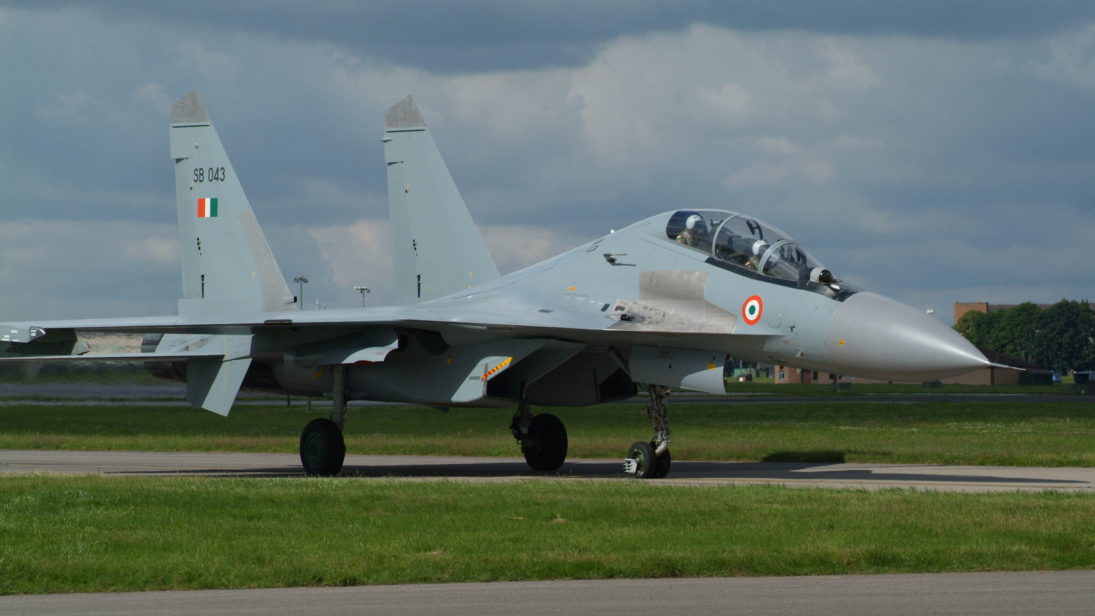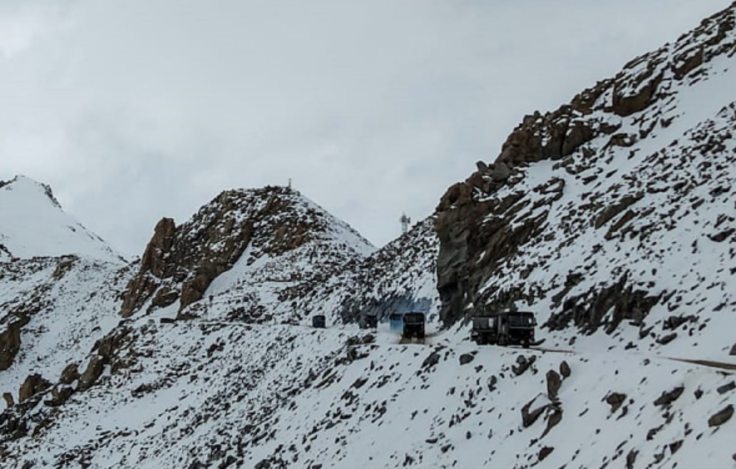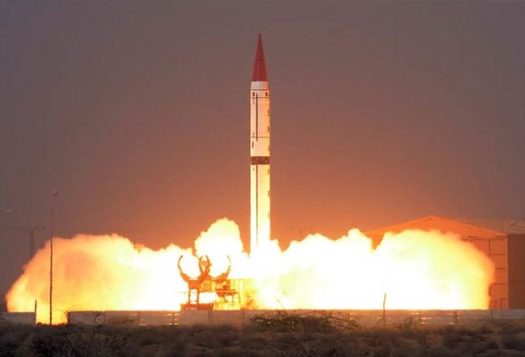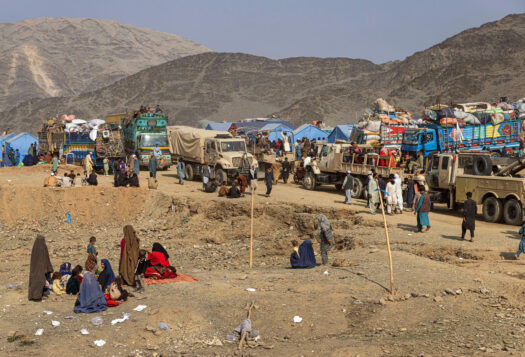
In early May 2020, the People’s Liberation Army (PLA) intruded into the Indian side of the disputed and un-demarcated Line of Actual Control (LAC) to unilaterally change the status quo. Despite the numerous rounds of talks between the Corps Commander-level and the Working Mechanism to resolve the border conflict, the two sides have been unable to reach an amicable solution.
India insists on restoring the status quo ante—the April 2020 position—along the LAC. India has also indicated it is not averse to military action to force the PLA to withdraw and restore the status quo. General Bipin Rawat, the Chief of Defense Staff of India, has stated that if diplomacy fails, “a military option is on the table.”
This article asserts that China is aware of the Indian Air Force’s (IAF’s) superiority on the border and is either pursuing a strategy of “deterrence by denial” or “deterrence by punishment” through its missile arsenal with respect to the IAF. However, given the IAFs superiority, India is better prepared for a “deterrence by punishment” strategy to compel China to restore status quo ante. While “deterrence by denial” aims to deter China from gaining territory along the LAC, “deterrence by punishment” aims to raise the cost for China by threatening to take the battle to the PLA and destroy and reduce its potential to undertake war. Given India’s edge over China on the Sino-Indian border, India can signal a deterrence by punishment strategy. The challenge for India, however, is how to credibly signal its capabilities and its intentions to China.
Given the IAFs superiority, India is better prepared for a “deterrence by punishment” strategy to compel China to restore status quo ante. …The challenge for India, however, is how to credibly signal its capabilities and its intentions to China.
IAF’s edge over PLAAF at the LAC
The IAF enjoys technological and numerical superiority over the People’s Liberation Army Air Force (PLAAF) along the LAC. According to a report by the Belfer Center for Science and International Affairs, China’s Western theater command, which is responsible for military operations against India, can muster 157 aircraft and different types of drones. Comparatively, India has 270 fighter aircraft and 68 ground attack aircraft in three commands: Western, Central, and Eastern. India has 122 fourth-generation fighters in comparison with China’s 101 (a portion of which are directed towards Russia), including SU-30MKI, which are superior to China’s fourth-generation aircraft in its Western theater command.
Additionally, India’s recently acquired French Rafale is reportedly superior to any aircraft in China’s inventory including the Chengdu J-20, a fifth-generation aircraft with stealth technology. Last, but not least, PLAAF pilots have no combat experience (especially in high mountain terrain), and are overly dependent on ground control which can lead to grave problems in combat. The IAF is the only air force in the world to have successfully conducted operations at high altitudes as illustrated during the Kargil war in 1999. Additionally, Indian fighter aircraft can undertake missions with a full payload whereas Chinese aircraft can only fly with around half the fuel and design payload. The close proximity of the Indian air bases and Advanced Landing Grounds (ALGs) to the LAC relative to Chinese airbases is another advantage for the IAF.
Responding to The PLA threat
According to IAF officials and the Belfer Center report, China’s main threat to the IAF is its conventional missile superiority. China has multiple missile bases in Tibet and air defense units near the border. However, if air defense systems near the border were destroyed or suppressed, then the IAF could dominate the war/conflict theater. Notably, China’s strategy of achieving air superiority through ground based air defense systems echoes Egypt’s in the 1973 Yom Kippur war against Israel, which had poor results. Initially, Israel suffered losses but Israel’s Air Force retaliated with a strategy of suppression and destruction of adversary air defenses destroyed the Egyptian air defense network and achieved air superiority. In the event of a war/conflict along the LAC, India should follow a similar strategy to destroy China’s air defenses and establish air superiority. Topography is also disadvantageous for China’s strategy. Mountainous terrain in Eastern Ladakh and some parts of Aksai Chin may impede the ability of Chinese radars to provide early warning to SAMs and anti-aircraft artillery.
Finally, India’s recently acquired Rafale fighter could play a lead role in the IAF targeting China’s air defense systems—although it will take time to fully induct into the IAF. Out of the 36 Rafale aircraft purchased from France, five aircraft were formally inducted in the 17 Squadron “Golden Arrows” of IAF on September 10, 2020 and are currently stationed at the Ambala airbase, with all 36 scheduled to arrive by the end of next year. In the event of a conflict, another threat would be that China could launch a missile barrage against Indian air bases, which would be consistent with a “deterrence by punishment” strategy. As noted in the Belfer Center report in a quote from a former IAF official, however, China would need approximately 220 missiles to keep one airfield shut for 24 hours. Given India’s multiple air bases and ALGs close to the LAC, China’s arsenal of 1,000-1,200 medium and short-range ballistic missiles would be quickly depleted if it tried to shut down three Indian airbases.

China’s Deterrence Strategy
China can use its ballistic missiles to achieve “deterrence by denial” and “deterrence by punishment” strategy. China can achieve “deterrence by denial” by reducing India’s probability of victory especially in the context of IAFs superiority. China could also use a “deterrence by punishment” by raising the cost of retaliation for India’s military action.
China has been upgrading old and developing new air bases, and strengthening its ground-based air defense network by setting up suspected new radar facilities and surface to air missile sites. China’s likely aim is that the threat of an impenetrable air defense network will force India to rethink using the IAF. This suggests a “deterrence by denial” strategy that attempts to signal that India would be “unlikely to succeed” should it undertake actions to restore the April status quo ante. The PLA is also constructing air defense infrastructure at various clash points along the LAC. By displaying its frontline air assets including what were suggested to be J-16 or J-11 fighters, J-20 aircraft, and H-6 bombers on the tarmac at its forward air bases in full view of satellites, China is employing psychological warfare to deter the IAF. Thus, China is signaling to India that the IAF will have to incur a huge cost in a war/conflict.
Despite assertions by Chinese analysts and media claiming China’s military superiority, the IAF has an edge over the PLAAF on the border. Since the IAF has the capability to exploit gaps in China’s aerial surveillance as discussed above, the best option for India would be to pursue a strategy of “denial by punishment.”
India’s “deterrence by punishment” strategy
Since the 1962 border war, India’s “deterrence by denial” was designed to prevent China from a land grab along the LAC. As argued by Yogesh Joshi and Anit Mukherjee in a 2018 study, in light of their growing asymmetry in material power, India gradually changed its strategy from “deterrence by denial” to “deterrence by punishment” vis-à-vis China. The need for a new strategy arose around 2009 due to deterioration in India-China ties and exacerbation of India’s security dilemma, and India has been shifting from a primarily defensive posture to a more offensive one by building up its capabilities near the border. The strategy was evident during the Chumar transgression in 2014 during President Xi Jinping’s visit to India when India amassed forces in the area and was reportedly prepared to use special forces to evict the PLA.
The challenge for India is to convey its strategy to China and to make it credible for China so that the latter restores status quo ante. The new strategy can be conveyed to China by transmitting India’s capabilities. Combat exercises employing the Rafale and other aircraft by the IAF will aid in delivering the message to China. Speeches by the Indian government and heads of the armed forces especially the IAF will allow China to determine India’s intent.
The IAF will spearhead India’s offensive against China and will also provide top cover to the Indian Army’s ground action. The IAF’s new strategy will take the battle to the adversary as it intends to employ offensive action. This action will be expanded and escalated into new areas and avenues rather than being confined to China’s area of choice. This sends a potent signal to China that its forces will suffer great damage if it undertakes military action to unilaterally alter the status quo or does not restore status quo ante along the LAC.
Escalating the conflict between India and China should be the last—not the first—option. Both countries’ great power aspirations will be affected by the ongoing standoff, and a stalemate or a loss will jeopardize China’s standing and claims for great power status.
The Risks of Escalation
Escalating the conflict between India and China should be the last—not the first—option. Both countries’ great power aspirations will be affected by the ongoing standoff, and a stalemate or a loss will jeopardize China’s standing and claims for great power status. To resolve the crisis along the LAC, both countries should withdraw their forces and restore status quo ante. However, if China is unwilling to withdraw from Indian territory along the LAC, India may be forced to undertake military action to evict Chinese troops. For India, a conflict/war could significantly set back its economic growth. An escalation on the border could also fundamentally alter the regional security structure in the Indo-Pacific—perhaps to China’s disadvantage. Considering the IAF’s decisive edge, it would be appropriate for the IAF to pursue and signal a strategy of “deterrence by punishment” which will play a pivotal role in any future Sino-Indian war/conflict.
***
Image 1: via Wikimedia Commons
Image 2: STR/AFP via Getty Images


